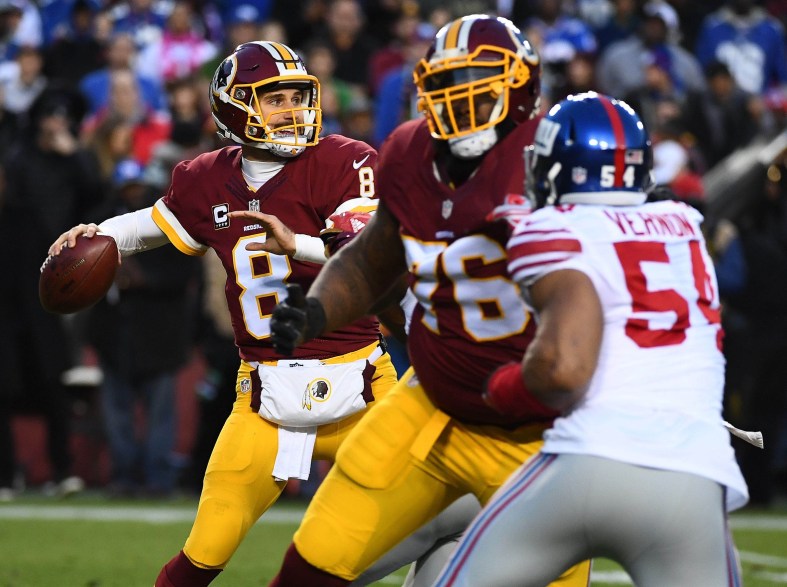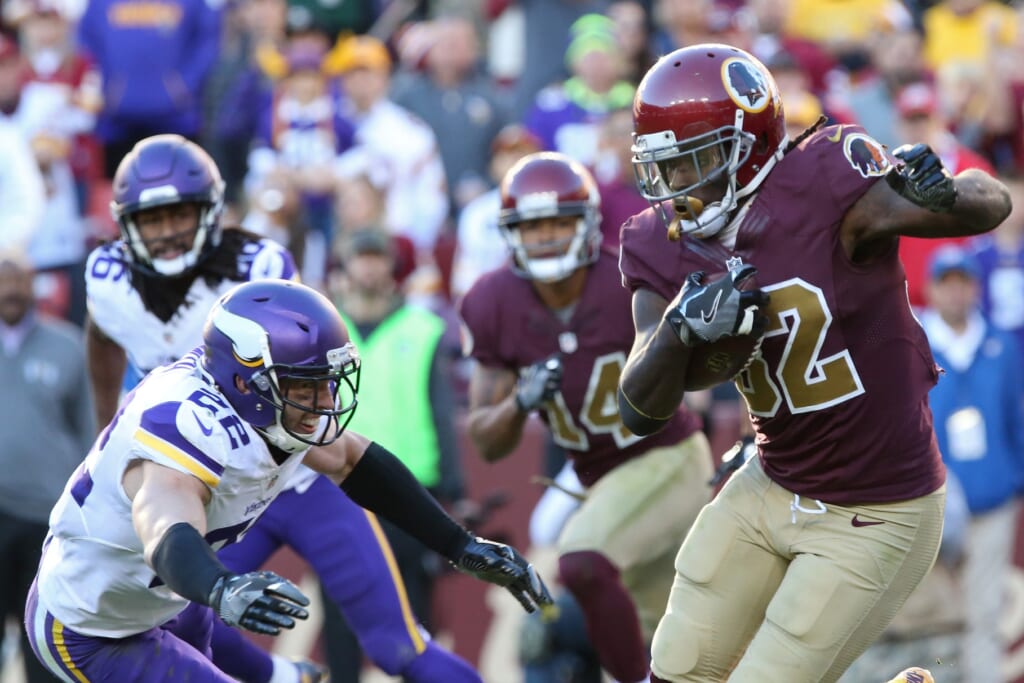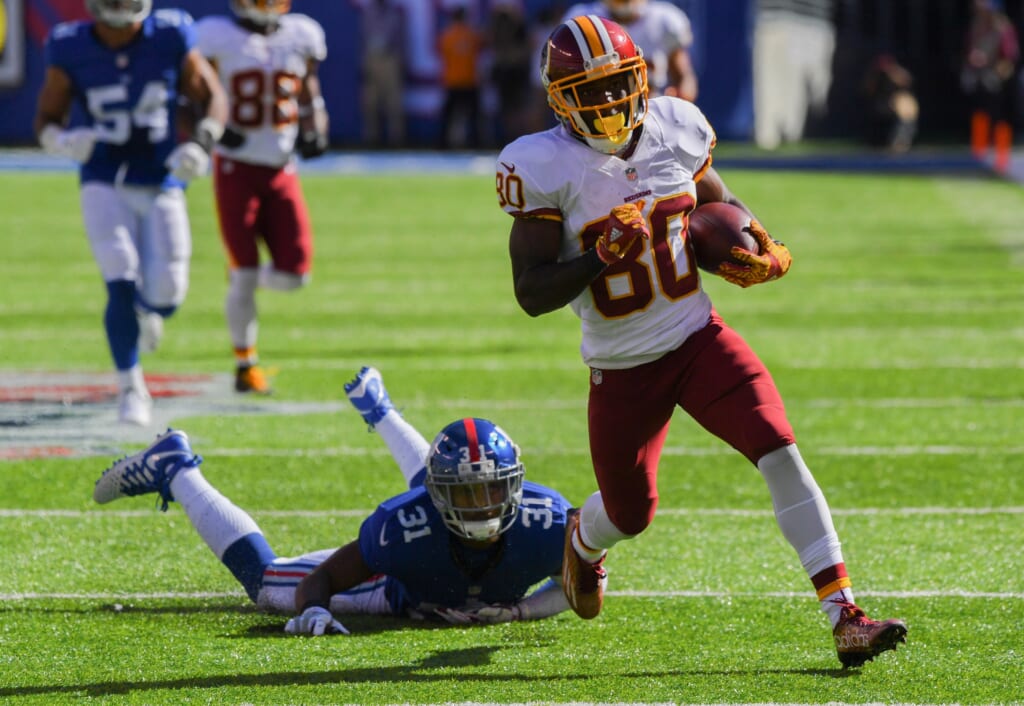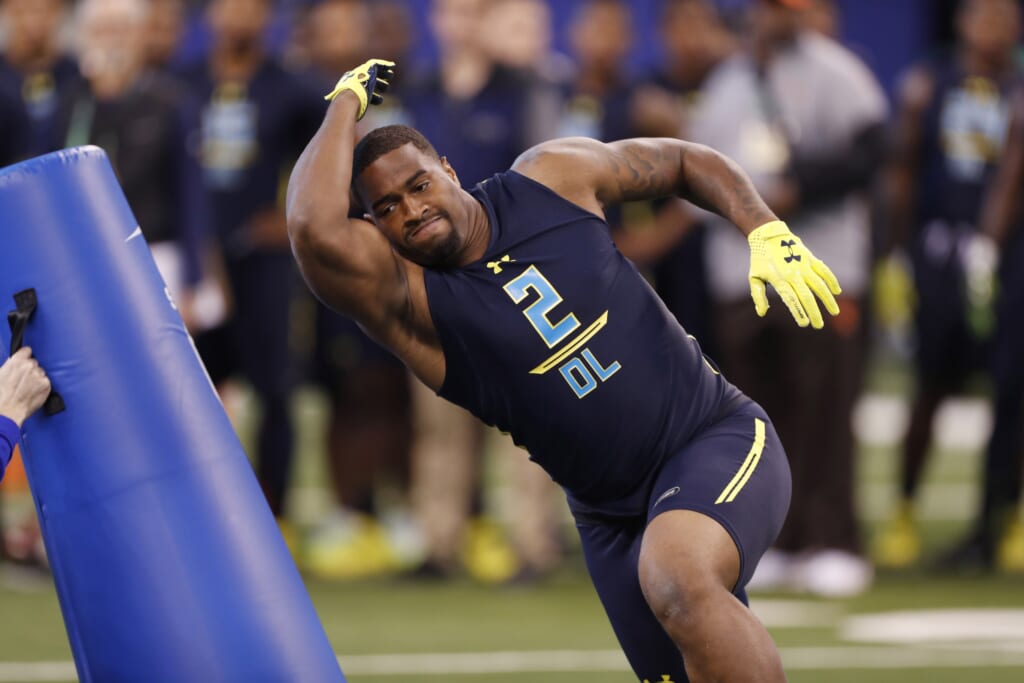
The Washington Redskins had about as bad an offseason as you could ask for.
They flirted with trading quarterback Kirk Cousins, ultimately deciding not to do so, or to give him a long-term deal. Now, it now seems a formality that Cousins leaves at the end of his contract.
They fired general manager Scot McCloughan, who built them into a good team.
They lost DeSean Jackson and Pierre Garcon, their two best receivers, and failed to address most of their problems during the offseason.
Three years from now, when we look at the reasons why the Redskins fell back to the bottom, most of them will be from this offseason. However, that fall is not complete. Cousins is still in Washington (for now), the offense is still good enough and head coach Jay Gruden has yet to move on to a better situation.
The Redskins will be in most games this season, but their shortfalls remain the same as in 2016 on both sides of the ball.
Offensively, the run game isn’t good enough. There are reasons for optimism with Rob Kelley, who turned in one of the best performances by a Redskins’ running back in recent years against the Packers in prime-time last season. He was 15th in DVOA and 17th in DYAR among running backs last season, both of which the Redskins will gladly take. However, the fact that he averaged only 4.2 yards per carry with a great offensive line is concerning. Kelley is unafraid to be a physical runner, which is a good thing. But his vision has to develop further for him to be the answer. You can only get so far by running over people.

That offensive line is one of the unheralded reasons for the team’s recent success. Left tackle Trent Williams — the most indispensable player on the team outside of Cousins — blew just seven blocks last season, ranking first in PFF grading at his position. Center Spencer Long, right guard Brandon Scherff and right tackle Morgan Moses were all solid in PFF grading and all are under 28 years old. Left guard is the only position where the Redskins come into the year with worries, and it’s hard to get worked up about that.
Because of this line, the Redskins were sixth in adjusted line yards and third in adjusted sack rate last season. When they ran to the middle of the field — behind the guards — they were 12th in adjusted line yards. Shawn Lauvao isn’t particularly good, but he has to be much worse for this to become an issue.
As for the passing game, it’s hard to see anything changing in terms of the big picture. Garcon and Jackson are gone, but Terrell Pryor, Jamison Crowder and Josh Doctson are solid enough replacements. We know what Kirk Cousins is at this point — a perfectly fine quarterback who can win games if you put the right pieces around him. Don’t be fooled by the stats on Cousins, his is a perfect example of why the eye test is still necessary. Yes, he was third in DYAR and eighth in PFF grading among quarterbacks while throwing for 7.45 adjusted net yards per attempt. But that was in large part because of the supporting cast around him. The Redskins quietly had one of the best receiving corps in the league last season, and the coaching staff put Cousins in a perfect position to succeed.
The turnover at receiver (and offensive coordinator, where Matt Cavanaugh replaces Sean McVay), puts a question mark in front of Cousins. But it’s not a particularly big one. Pryor had 1,007 receiving yards in Cleveland last season, so it’s tough to see him struggling with Cousins throwing the ball. Doctson missed his rookie season with an Achilles injury, but he could become Cousins’ go-to weapon in the red zone and on the in-breaking routes that have come to define the offense.
The question isn’t so much whether this duo will be capable as much as defining exactly how big the drop-off will be. Jackson was credited with eight created receptions (in other words, eight bad throws which he caught) last season by Cian Fahey’s charting. Can Pryor and Doctson do that, especially on deep balls?

In terms of familiar faces, Crowder should see an uptick in his role as Cousins learns to play with Pryor and Doctson — an exciting prospect given Crowder’s talent. The receiver was quietly one of the better in football last season, bringing in 68 percent of his targets. He could hit the 1,000-yard mark this season if Cavanaugh gets him more involved than the 99 balls thrown his way last season. At tight end, Jordan Reed will be one of the best players in the league if he can stay healthy (he’s already injured), which isn’t exactly breaking news. Last season, with his counting numbers down thanks to injuries, Reed still had a 74-percent catch rate and finished sixth at his position in PFF grading.
The high catch rates exhibited by Crowder and Reed were a sign of what made the offense so efficient last season despite not having a superstar to its name. Jackson and Garcon had catch rates of 56 and 69 percent, respectively. Jackson’s was lower because his routes were usually further off the line of scrimmage than everyone else’s, but the generally high catch rates were much a product of the offense as they were of Cousins, or the receivers themselves. The biggest sign of whether they can succeed this year will be whether Pryor’s catch rate stays near the 55 percent it was last season or lands closer to 65 or 70 percent. In the latter scenario, the ‘Skins may stay competitive until December, as they did last season. From there, anything can happen. However, the defense gives reason to be skeptical.
Washington survived a defense that ranked 25th in DVOA last season because the offense was potent enough to make up for it. However, the change at receiver may harm that potency enough that their defense grows more important. One the positives in this area is that there will be injury regression in their favor this season. The Redskins were 31st in defensive adjusted games lost last season, per FOA, which is unlikely to carry over.
As long as we’re talking about the good parts of Washingtons defense, we should get to Jonathan Allen, the team’s first-round pick. As an end in Joe Barry’s 3-4, Allen may instantly be the best run defender on a team that finished 27th in adjusted line yards last season. He flashed great speed and shed blocks with ease as a member of the Crimson Tide. His pass-rushing ability is less of a sure thing — he struggled a bit with players the size of NFL tackles. That said, Allen was fourth in pass-rushing productivity according to PFF and had an absurd 93.4 pass rushing grade last season. In other words, any concerns are minimal.

The rest of the defensive line, however, has been and remains an issue. Nose tackle Ziggy Hood had an abysmal 40.5 PFF grade last season. If the newly acquired Stacy McGee stays healthy, he could help out, but he’s never started a full season.
At linebacker, Washington isn’t half bad. Ryan Kerrigan is one of the better edge rushers in football. He was in the top-15 at the position in run stop rate last season and had 11.0 sacks, nine hits and 40 hurries last season, per FOA. In the middle of the field, Mason Foster and Zach Brown were both in the top-20 among linebackers in PFF grading last season. It’s the other edge rusher position where the Redskins could have trouble. Trent Murphy (suspended the first four games) and Preston Smith will likely both get snaps there, but both are poor run defenders. Murphy is a solid enough pass rusher, notching 8.5 sacks last season, but teams can attack him in the run game.
The secondary is where Washington could have serious issues. Josh Norman is still a star, but his PFF grade dropped from 87.7 in 2015 to 81.0 in 2016. That’s the difference between a very good corner and a shutdown corner, a difference which is accentuated on a team like the Redskins, which doesn’t have good cornerback depth. Bashaud Breeland had a paltry 49-percent success rate last season. Kendall Fuller was even worse at 41 percent, per FOA. In fairness to Fuller, he’s 22 and played less than 500 snaps last season, but his performance wasn’t promising.
The acquisition of D.J. Swearinger could help out at safety. Swearinger was quietly one of the best in the league last year with the Cardinals, ranking ninth among safeties in PFF grading. However, free safety is a question mark. Su’a Cravens is a natural linebacker, and despite being a strong run defender, it’s hard to trust him in single-high. Washington likes to play both Cover-1 and Cover-3. That role gets even more important considering the team’s deficiencies at corner.
Washington was an 8-7-1 team in 2016 that got slightly worse over the offseason. It downgraded at receiver, didn’t do enough to address defensive issues, and put its quarterback on a countdown clock to leaving. The Redskins can still compete, but the ceiling is growing lower as the team heads for a reset after this season.
If you would like to learn more about the advanced stats we used, check out FootballOutsiders.com, which is largely free, or ProFootballFocus.com which is not.